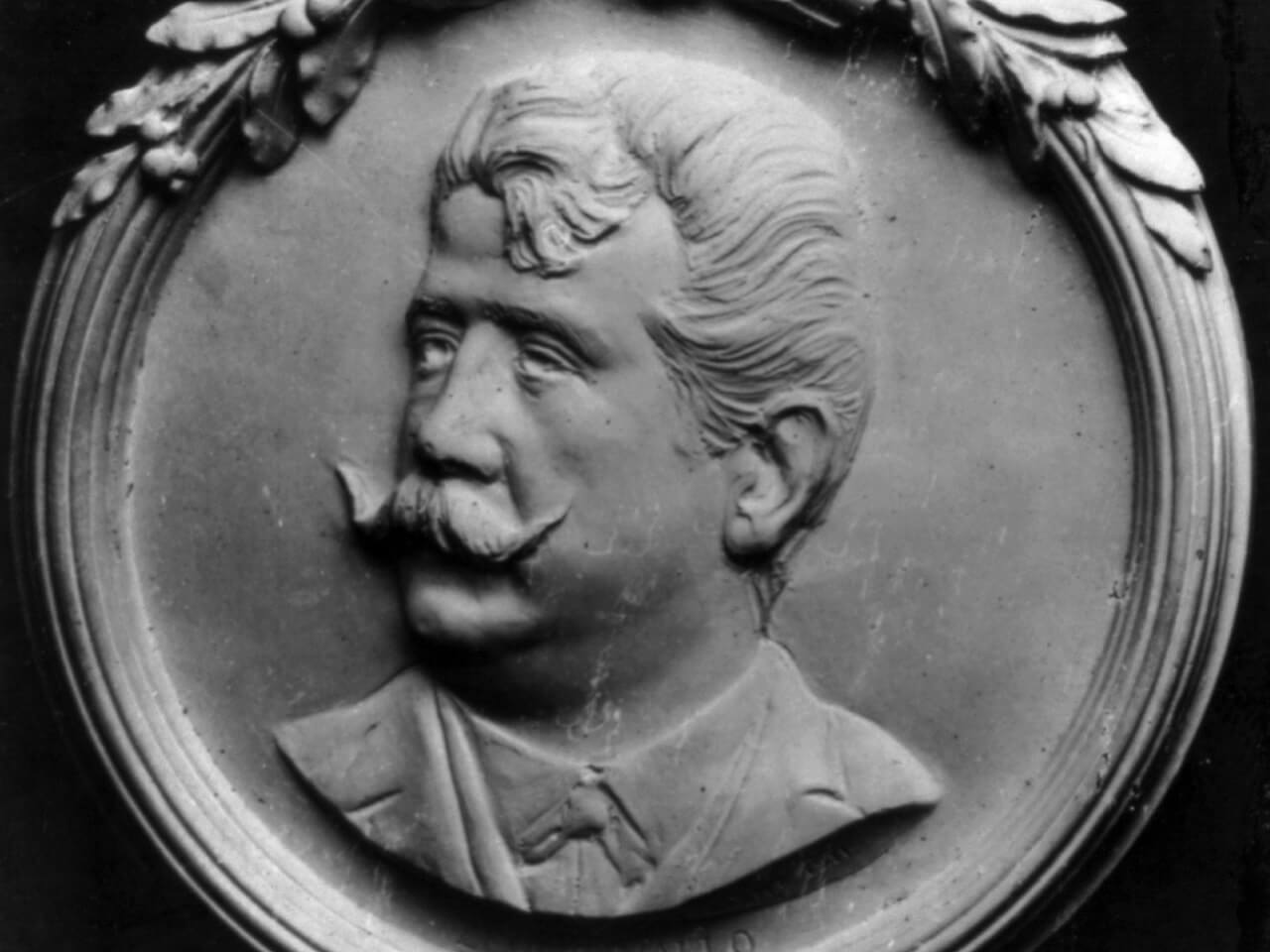A century ago, on August 9 in Montecatini Terme, just southwest of Pistoia in north central Italy, Ruggero Leoncavallo, Neapolitan opera composer, died. His fame is linked to Pagliacci (“Clowns”), a two-act opera of 1892, which, together with Cavalleria rusticana (“Rustic Chivalry,” 1890) by Pietro Mascagni, is the most explosive reaction against Richard Wagner and against Romantic Italian opera. Both operas belong to the verismo genre, with its emphasis on stark reality. In it, as the prologue at the beginning of Pagliacci outside the curtain states:
Our author has endeavored, rather,
to paint for you a slice of life,
his only maxim being that the artist
is a man, and he must write
for men. Truth is his inspiration.
“The land of Calabria,” John Paul II said prior to the Angelus on June 12, 1988, “is spangled with Marian shrines, the clear expression of a deeply felt and lived piety.” Among them is the church of Madonna della Serra in Montalto Uffugo, near Cosenza, which, consecrated in 1227 but entirely rebuilt from the late 18th century, is on the edge of the historic district. Ruggero, at the age of 8, was brought to this town by several family transfers; here his father, the royal magistrate Vincenzo Leoncavallo, was the judge of a tragic story of blood, which occurred on March 5, 1865, which would be recalled in Pagliacci.
In a sort of tourist guide of the Kingdom of Naples of two centuries ago, under “Montalto,” we read:
Town on a hill, with good air, Diocese of Cosenza, 12 miles distant from said City. His Dukedom title is of Moncada. It was once called Uffugo, and was an Episcopal See, but, as the population was diminished, it was annexed to the Metropolitan Diocese of Cosenza. It produces grains; legumes; fruits; wines; oils; mulberries; and mines of white marble, sulfur, lead, and vitriol. It has a population of 4,499. (G. M. Alfano, Istorica descrizione del regno di Napoli, Napoli 1823, p. 170)
In the night between September 7 and 8, 1905, a catastrophic earthquake shook Calabria, affecting a large area: from Cosenza to Catanzaro to Reggio Calabria up to the nearby coasts of Sicily. History records in this area, still today “characterized by deep seismicity” according to the National Institute of Geophysics and Volcanology, some of the strongest earthquakes — particularly that of 1905, located at sea, estimated magnitude 7.0, which caused an important tsunami.
The church of Santa Maria della Serra in Montalto Uffugo also suffered considerable damage, including the collapse of the roof. Leoncavallo, who since 1904 has been at Brissago in Ticino Canton, southern Switzerland, strove to raise funds for earthquake victims and for reconstructing the church. To this end, right there on the shores of Lake Maggiore, in 1905, he composed the Ave Maria in C major, prayer for tenor, harp, and harmonium.
It is dedicated “to His Holiness, Pius X, sovereign pontiff,” from whom Leoncavallo received the following handwritten letter of thanks:
To the beloved son, Professor Ruggero Leoncavallo:
Heartily praising your holy thought, we accept with the highest satisfaction the dedication of your work with the hope that heaven will answer the prayers of the blessed by richly rewarding your act of charity, and we give you with paternal affection the Apostolic Benediction.
—Pius PP. X
When he published at his own expense the composition in 1905 at Litho-Werke A. Trüb & Cie. in Aarau, northern Switzerland, Leoncavallo also had the pope’s letter printed on the third page. At the bottom of the same page, we read:
The profits from the sale of the first editions of this Ave Maria are used some for those damaged by earthquake in Montalto Uffugo (Calabria) and some for the reconstruction of the Church of Madonna della Serra also in Montalto Uffugo.
—Leoncavallo
During much of the autumn and early winter, with great strength and full dedication the composer, in addition to three fundraising concerts, sent copies of his Ave Maria, attaching a request of donation, in order to reconstruct the church of Madonna della Serra. A printed letter addressed to “all my friend in all countries,” for an already mailed composition costing three francs, was received by all who were in correspondence with Leoncavallo during this period.
Among them were Ernst von Hesse-Wartegg, an Austrian writer and prolific writer at that time consul of Venezuela in Switzerland, and his wife Minnie Hauck, U.S. soprano. They lived in Villa Triebschen on the Lake of Lucerne, which was Wagner’s residence. Leoncavallo immediately sent the couple ten copies, certain that “your wife will not refuse,” as he wrote in his cover letter of October 26, 1905. Some time later, interested in seeing Wagner’s former home, he would visit the couple.
On November 13, 1905 Leoncavallo, in a letter to an unidentified recipient, declared that he had raised “30,000 francs” from “sovereigns, princes, prelates, nobles or businessmen” (cfr. K. Dryden, Leoncavallo Life and Works. Lanham, Md.: Scarecrow Press, 2007, pp. 92–93).


